
Whether you have a chronic illness or you have no health issues at all, chances are you’ve experienced the unpleasantries of a headache. For frequent or intense sufferers of headaches, describing your concern can feel really frustrating, especially when your symptoms seem hard to pinpoint.
If you’re trying to track down a diagnosis or get treated, knowing how to have productive conversations with your healthcare provider is the first step.
To help you take charge of your pain, this article provides a toolkit for precisely describing your headaches to your doctor. By better describing your symptoms, you can help your doctor narrow down potential causes and start managing your headaches.
What exactly is a headache and why does it happen?
A headache is a pain or discomfort in your head that can vary in intensity, location, and duration. They can be caused by several factors, like stress, muscle tension, inflammation, nerve-related issues, or other factors like underlying illness.
What are the different types of headaches?
Most headaches can be classified into two different types: primary and secondary.
A primary headache is a condition itself. This means that the pain isn’t due to a separate medical condition, but instead, it can be caused by something like genetics or lifestyle habits. Here are some common ones:
A secondary headache, on the other hand, is a symptom of an underlying condition. Here are a few examples:
- Sinus or congestion headaches
- Headaches induced by dehydration
- Medication overuse headaches
How to describe your headache pain to a doctor
To help pinpoint a cause, there are 4 main things you should be able to tell your doctor about your pain: type, location, intensity, and timeframe.
There’s some biological process behind whatever type of headache you have. So, depending on what that process is, your headache will show certain characteristics that make it easier to diagnose.
1. Type
As many of us know all too well, pain can show up in a lot of different ways. With headaches, certain descriptors are often associated with certain types, so using the right language is a good start.
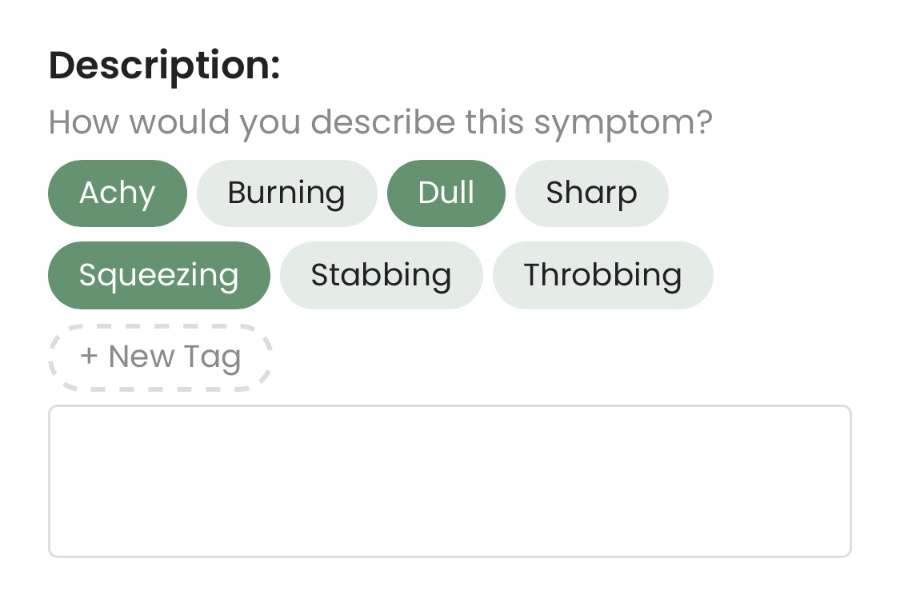
Here are some adjectives your doctor will be familiar with:
- Throbbing
- Pulsing
- Steady
- Constant
- Sharp
- Piercing
- Burning
- Squeezing
- Tight
2. Location
You can think of your brain as a network of signaling pathways that are all headed in different directions. For different headaches, certain pathways are ‘lit up’ and cause pain in different areas.

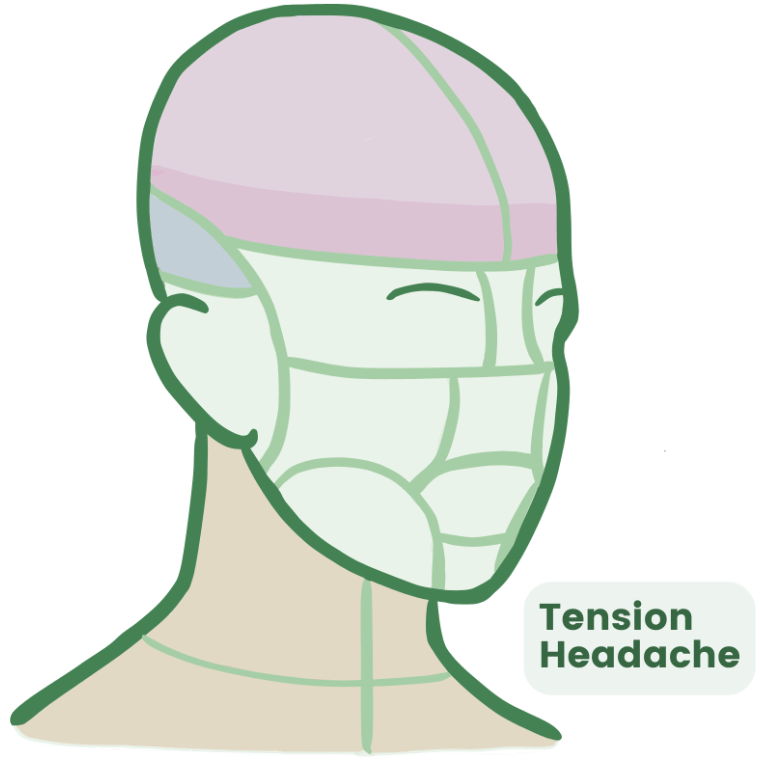
Here are a few ways to describe where you feel pain:
- Unilateral: This means that your pain is contained to one side of your head. It can also be a small region, like just behind one eye, for example.
- Bilateral: Pain on both sides of your head is often referred to as bilateral. It may feel evenly dispersed or spread out, but it doesn’t have to affect both sides equally.
- Headband region: This is the area above your eyes that wraps around the back of your head. This also includes the sides of your head or temples.
- Occipital region: The back of your head is a common area to feel a steady ache and it often goes hand-in-hand with the headband region.
- Coming from the inside-out
- Upper back, neck, or shoulders
3. Intensity
One of the most helpful tools for explaining your discomfort is the pain scale. This simple system allows you to rate your pain and makes it easier for your doctor to understand the severity of your headache.

How does the pain scale work?
- Mild (1-3): At this level, your headache is noticeable, but the pain is relatively minor and manageable. It might be an annoyance, but it doesn’t get in the way of daily activities too much.
- Moderate (4-6): A moderate headache can be distracting and might interfere with your ability to focus. The pain is noticeable and might require some over-the-counter pain relief.
- Severe (7-9): At this level, the headache is intense and significantly impacting your daily life. The pain is overwhelming, making it difficult to focus on tasks or find relief with simple pain medications.
- Very Severe (10): A level 10 headache is excruciating and might be described as the worst pain of your life. If it occurs suddenly, it’s sometimes called a thunderclap headache and requires medical attention.
4. Timeframe
Headaches are also characterized by how often, when, and for how long you experience them.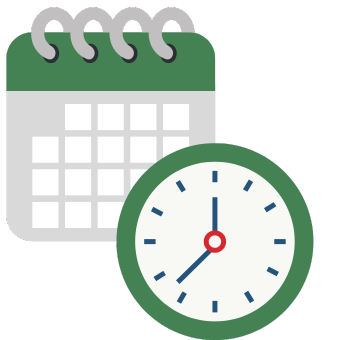
How often: They can occur daily, annually, or anywhere in between. Besides the diagnosis, understanding frequency is vital for forming a treatment plan. For example, if you’re taking over-the-counter medication more than twice a week for your headaches, your doctor will probably want to make an alternative plan.
When: Certain headaches can be more common during specific times of the day, and in rare cases like cluster headaches, they can even be seasonal.
For instance, there’s a big difference between headaches that happen at the end of your workday (after staring at your computer) compared to headaches that you wake up with every morning (perhaps due to sleep apnea). In light of that, it’s important to keep track of what else might be going on in the time surrounding your headache, like excessive stress or worse sleep than usual.
How long: As you can imagine, the duration of different headaches varies a lot too. Some may last only 15 minutes to a few hours, while others, like migraines and tension headaches, can sometimes last days.
Some things to consider besides pain:
Additional symptoms
Besides the ache of your headache itself, you should also mention any additional symptoms that accompany your pain.
Cluster headaches are a good example of a headache with a few different accompanying symptoms. Besides pain behind one eye, you may get a runny or congested nose, as well as some occasional tooth and jaw pain.
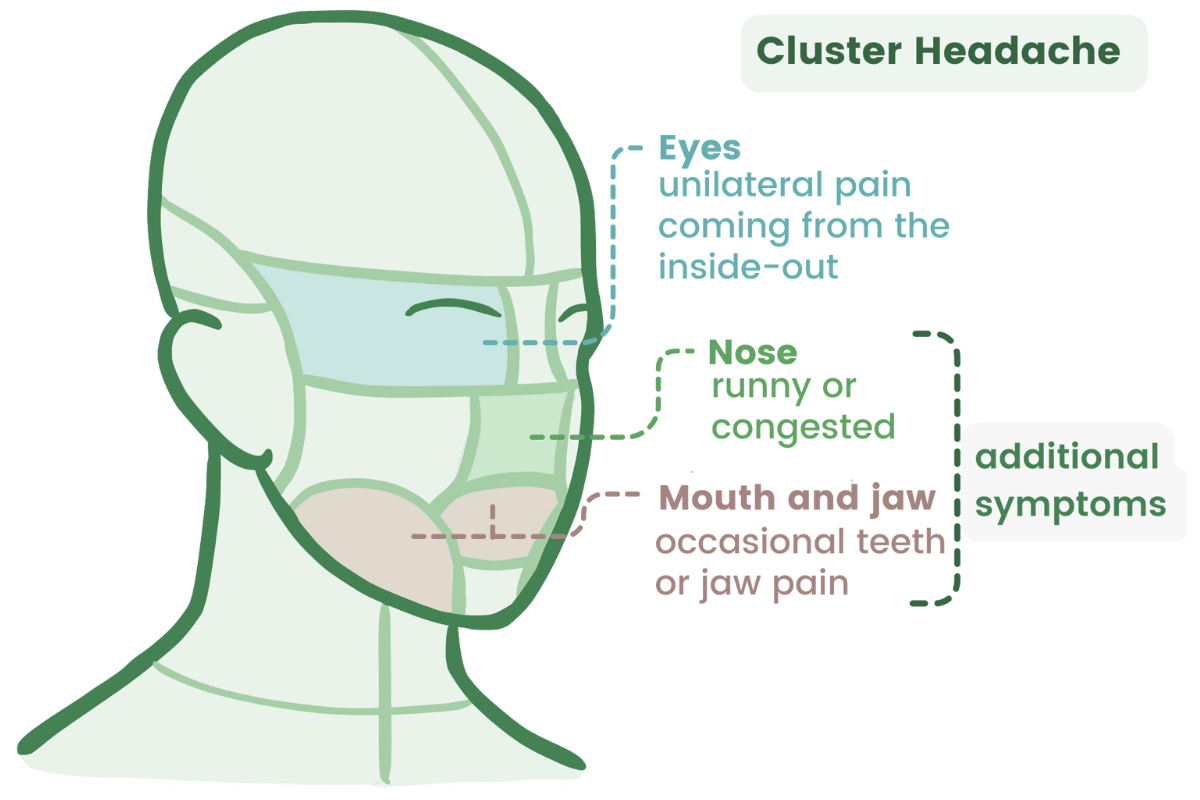
Other things to pay attention to are mood swings, changes in appetite, muscle tension, or congestion, to name just a few. Changes to your motor or sensory function can be important too. This can be tingling, numbness, or limited movement in your fingers, arms, or legs.
Patterns and triggers
Paying attention to what in your day-to-day life might have triggered a headache is another vital factor. Excessive stress, for example, is one of the most common causes of tension headaches. For cluster headaches, excessive smoking or drinking can trigger an attack, whereas other types can be due to things like caffeine or medication overuse.
Paying attention to these patterns and triggers can help your doctor find a diagnosis, as well as help you preventatively manage your headache pain.
Keeping a Log of Your Headaches
Now that you know what exactly to bring up with your doctor, you need a good way to keep track of all of this information in the first place. Knowing how to describe your headache in writing is a great start.
Each time you get a headache, you should note the date, time, duration, and severity. Get specific about the type and location of your pain, as well as accompanying symptoms. If you took pain medication, be sure to record it and keep track of how your symptoms responded. Before you forget, write down what you were doing, what you ate, or any other medications you took before your headache started.
For those with recurring headaches, so many of these vital details get lost in translation by the time you make it to the doctor. By maintaining a record, they can help identify the source of your headache, as well as potential triggers and treatments. Over time, you can also use these notes to track the progress and effectiveness of different medications or lifestyle changes.
Tracking and Managing Your Headaches Effectively
Apps like Guava can guide you through answering these questions so that you describe your headaches correctly. We’ll suggest adjectives to describe your pain, compile the timeline, and pull in other symptoms and metrics you’ve logged that might be associated. Using this data and your relevant health history, we’ll generate a visit prep summary so that when you’re ready to see a doctor, you won’t miss any of the details.
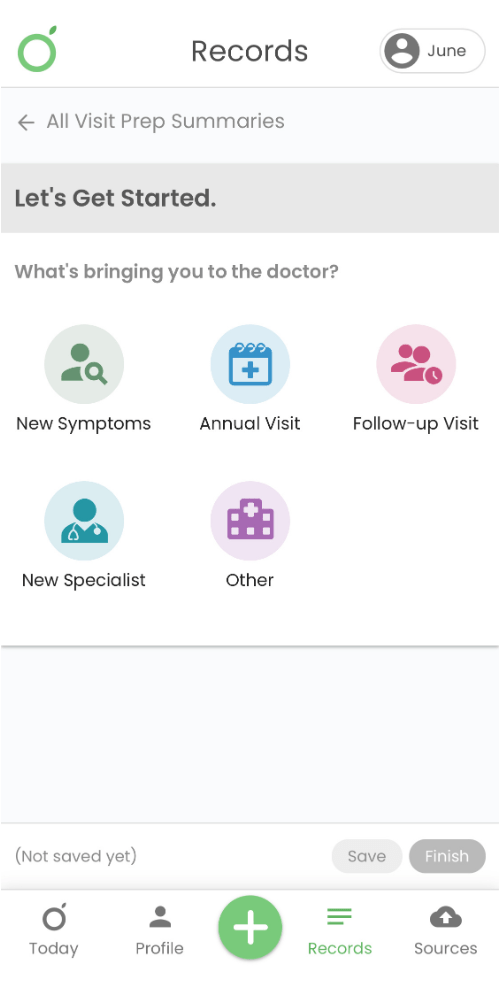
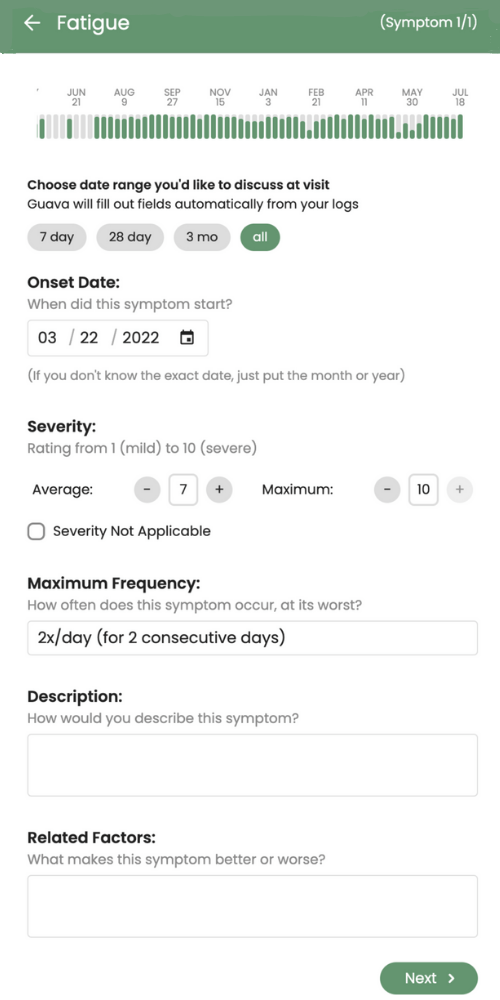
Proactive communication with your doctor is the first step toward effective headache management. By providing detailed and accurate information about your headaches, you’ll allow your healthcare provider to make a precise diagnosis and develop a more personalized treatment plan. Don't hesitate to reach out to your doctor if you need support in managing your headaches. Together, you can work towards finding relief and improving your health.






